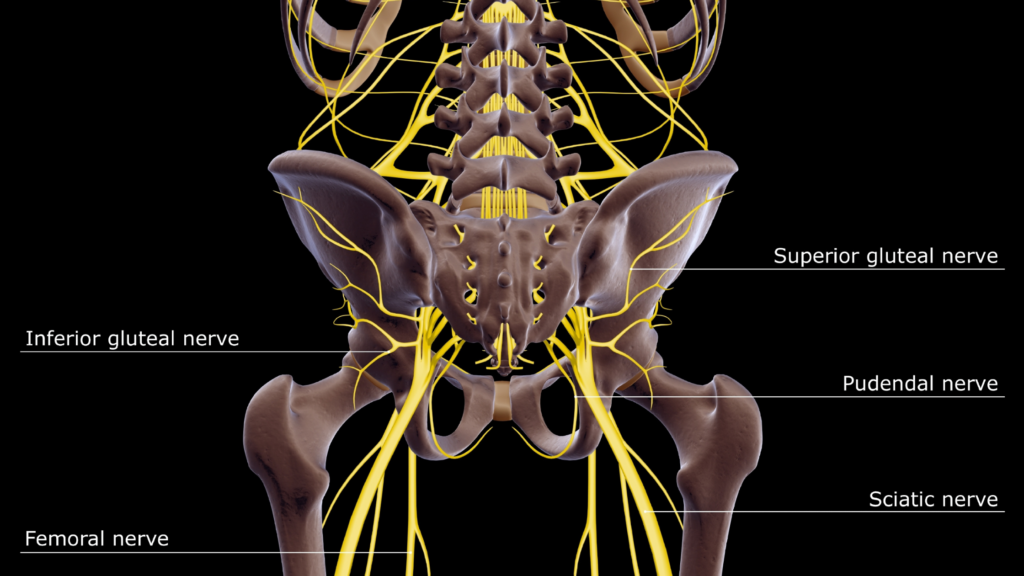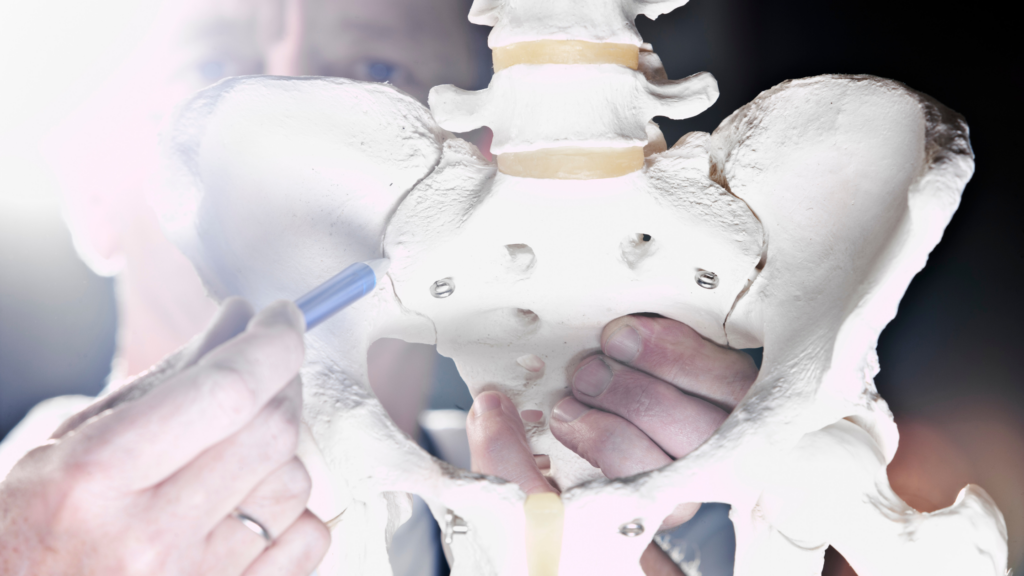If you ask ten people for a definition of “sciatica,” you’ll get several different answers. If you ask those same ten people where “sciatica” pain is located, they’ll likely point to many other areas in their lower body. This is precisely the problem with the term “sciatica.” It means different things to different people, which is why this term has limited usefulness and should consider retirement. Rather than negotiate a consensus definition for “sciatica,” let’s focus on what the associated symptoms signify and what they don’t.
When describing “sciatica,” some people point to their low back, while others identify their buttocks, and still, others gesture to their hamstring or calf regions. Word association with the condition “sciatica” leads to the anatomical structure called the sciatic nerve. The main reason that the term “sciatica” is confusing is that it is extremely rare for the sciatic nerve itself to be injured.
The sciatic nerve begins in the buttock and travels down through the thigh.

The sciatic nerve is formed by multiple nerve roots that exit the spine at five individual levels:
- Lumbar Nerve Root #4
- Lumbar Nerve Root #5
- Sacral Nerve Root #1
- Sacral Nerve Root #2
- Sacral Nerve Root #3

Lumbar refers to the low back spine, and sacral means originating from the sacrum, a pelvis bone below the lumbar spine and above the tailbone.

These five nerve roots exit the spine and merge in the buttock to form the sciatic nerve. In most cases, one of the individual nerve roots is injured within the spine, which causes the symptoms commonly referred to as “sciatica.” Symptoms from the injured nerve root ultimately send a pain message through the sciatic nerve, but it is not the sciatic nerve that is injured. This distinction is important because the treatment for these symptoms focuses on the injured nerve root in the spine rather than the sciatic nerve. Nerve root injuries are commonly caused by disc abnormalities or bone spurs associated with spinal arthritis. There are nonsurgical treatments for these conditions, the most exciting of which is Discseel for disc-related symptoms. Learn more about nonsurgical spine treatment options at RegenerativeSpineAndJoint.com.
The term “sciatica” is confusing and open to multiple interpretations. The sciatic nerve is virtually never injured compared to the common circumstance of low back nerve root symptoms. For those reasons, the term “sciatica” should consider retirement.
To learn more about the Discseel procedure or sciatic nerve injuries, fill out the form below to contact Dr. Terebuh and the Regenerative Spine and Joint Center team.

